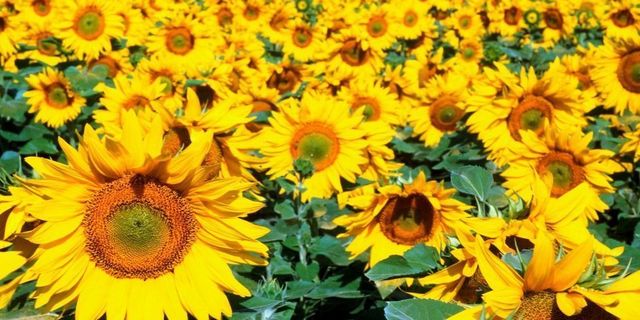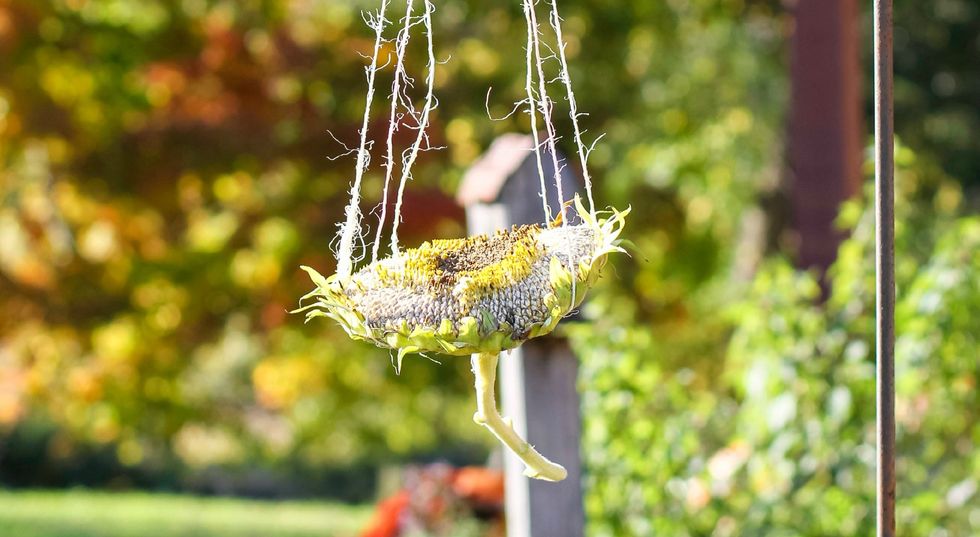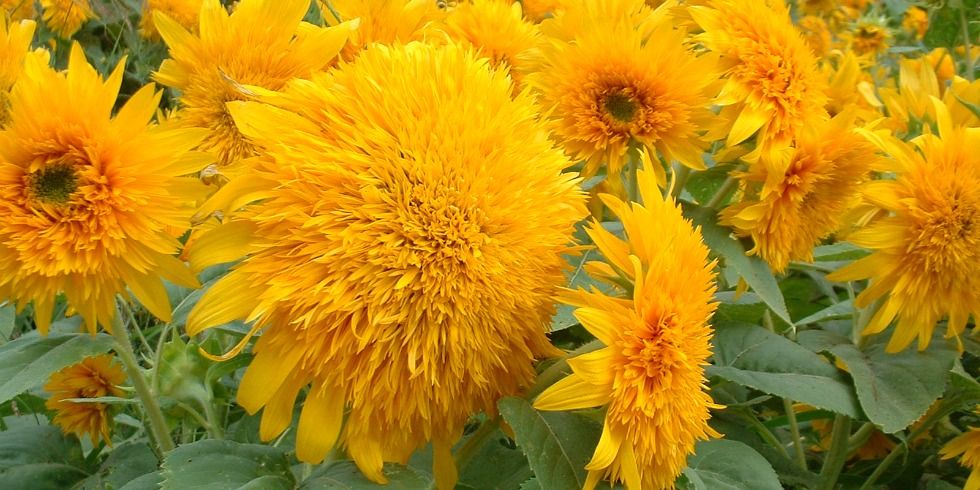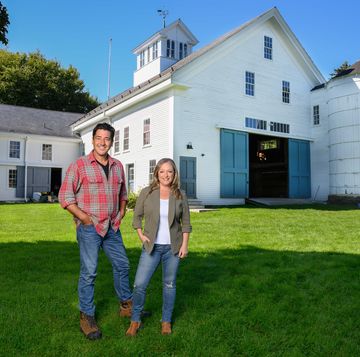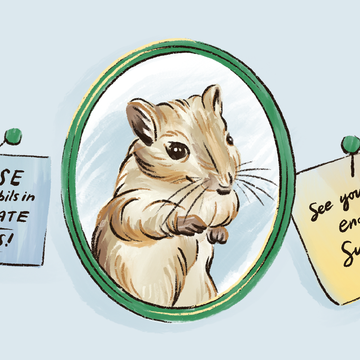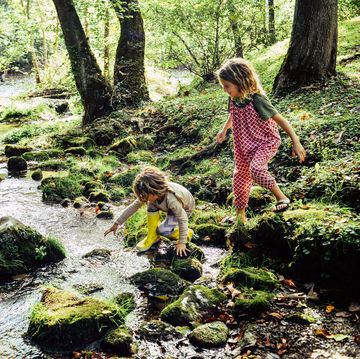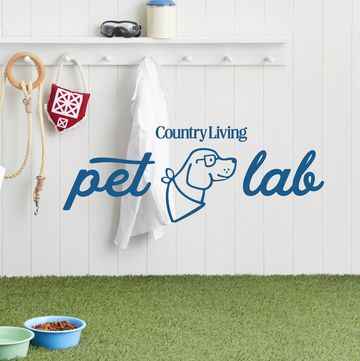1. Each sunflower is actually thousands of teeny flowers.
The iconic yellow petals and fuzzy brown centers are actually individual flowers themselves. As many as 2,000 can make up the classic sunflower bloom.
2. You should harvest sunflowers in the morning, not the afternoon.
Planning to clip a few to display in a vase? If you wait until the afternoon, they may wilt.
3. Sunflowers are native to the Americas and were domesticated around 1000 B.C.
Even way back when, people saw the value in growing sunflowers, which are still harvested for sunflower seeds (and the oil you can make from them) today. In 2014, 1.7 million acres were planted in the United States, the USDA reports. The majority of those were found in North Dakota.
4. A dried sunflower makes a unique, natural bird feeder.
Feathered friends love to snack on sunflower seeds just like you do. To find out how to hang this garden-inspired feeder (no peanut butter required!), get the tutorial at Creative Cain Cabin.
5. Each sunflower can contain as many as 1,000 to 2,000 seeds.
So there are tons for birdies to munch on! But you can harvest and roast them for yourself, too.
6. There are about 70 species of sunflowers.
Their genus name is Helianthus (which comes from the Greek words for "sun" and "flower"). While many varieties look bright and cheery, their shapes can be quite different. For instance, these funny "goldie" sunflowers look like puffballs.
7. The French word for sunflower is "tournesol," which means "turns with the sun."
In their bud phase, sunflowers will literally seek out and face the sun. This trait is called heliotropism.
8. The tallest sunflower on record was over 30 feet tall.
Coming in at 30' 1'', the bloom was grown in Germany by Hans-Peter Schiffer, who has held the record twice before.
9. Sunflowers have been planted to help soak up nuclear radiation.
They're not just pretty faces; sunflowers are actually good at absorbing toxins, too. Millions were planted after the devastating tsunami destroyed reactors in the Fukushima nuclear power plant in Japan.

